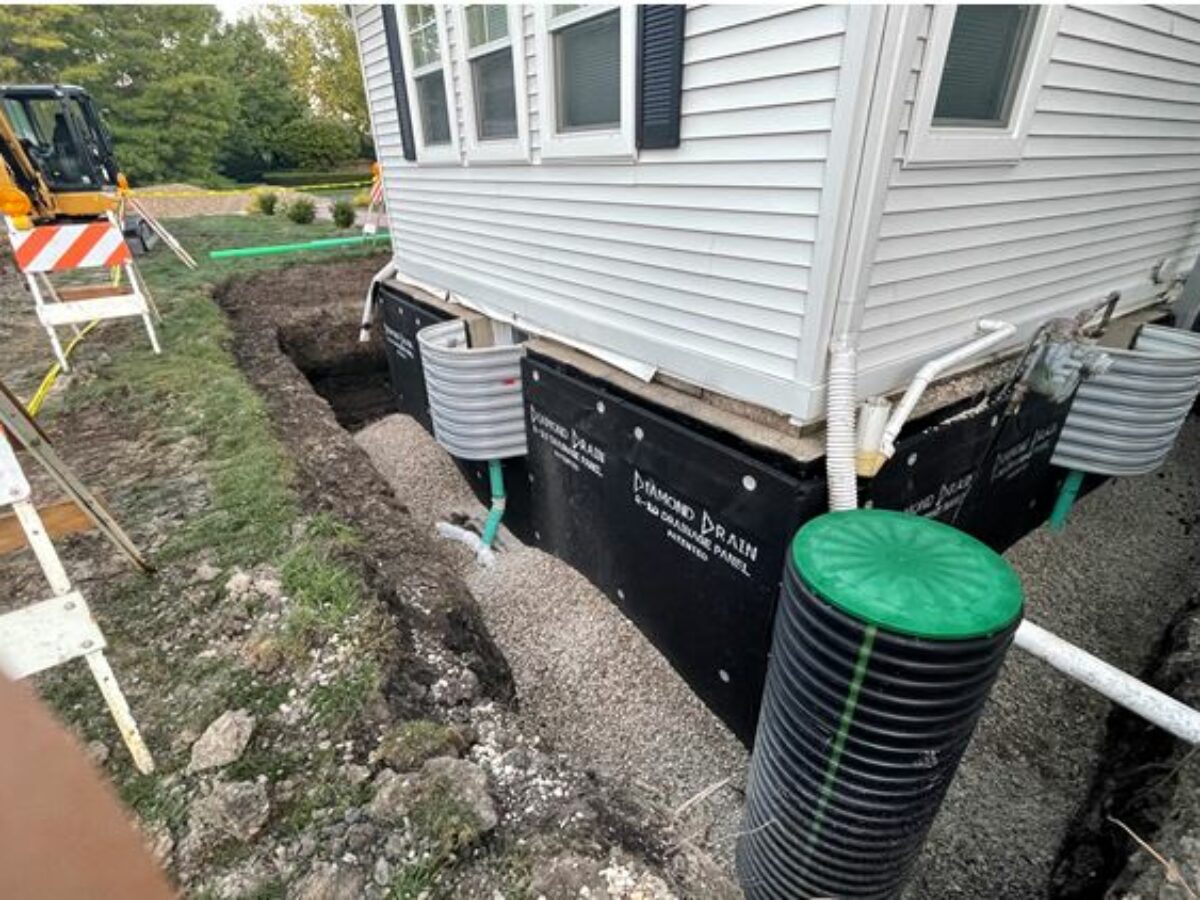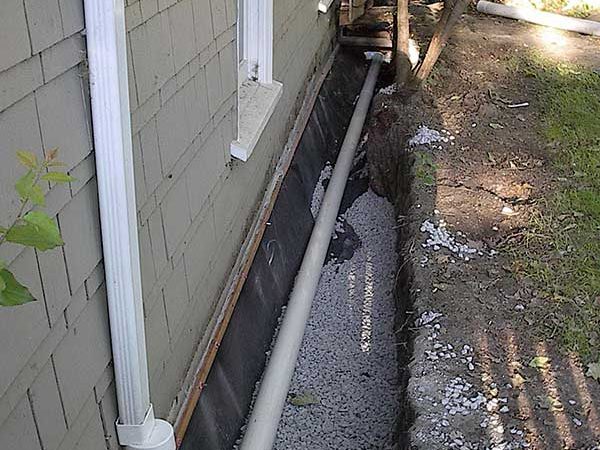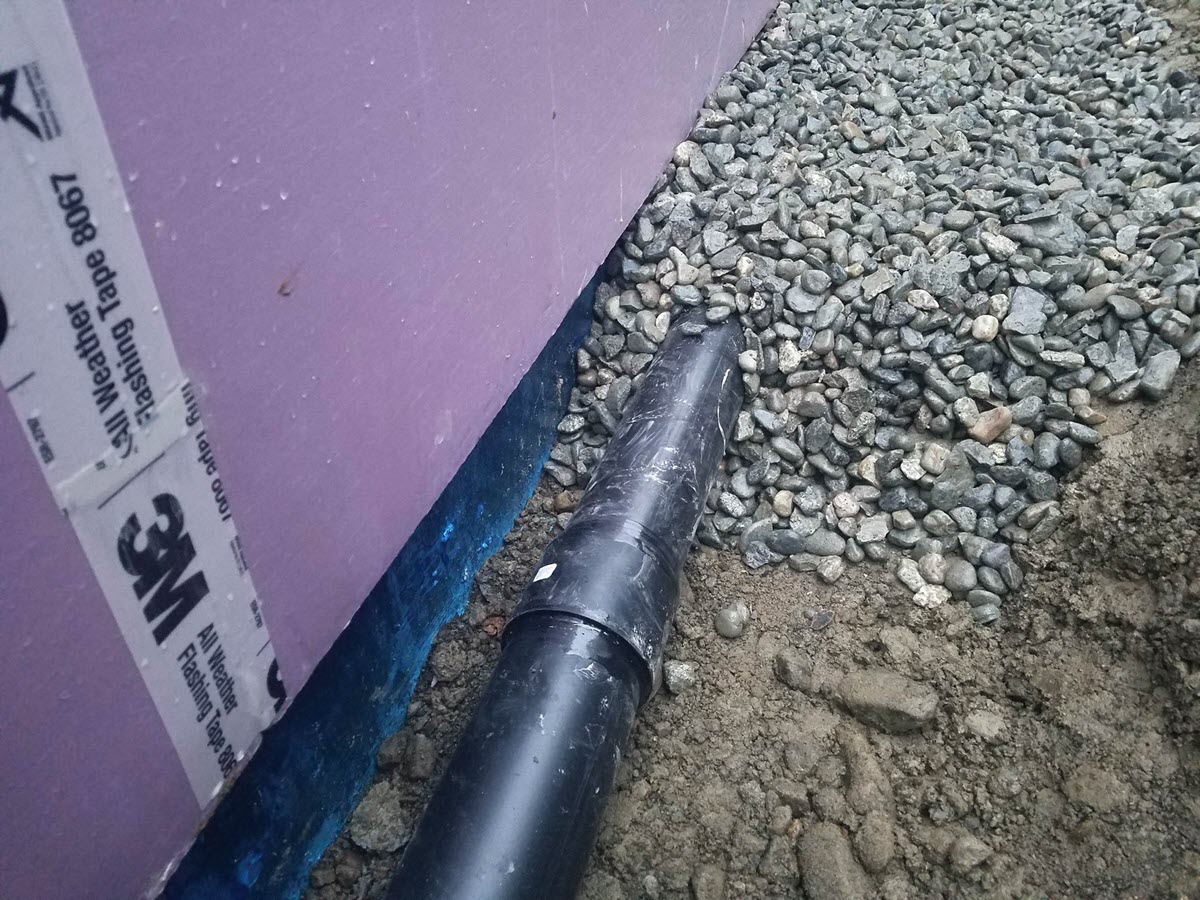Foundation Drain Servicesin Marine City MI
Foundation Drain Solutions to Keep Your Building Secure
We Are Locally Owned & Operated For Over 37 Years
Contact Us Today!
We Serve Businesses In And Around The Following Cities:
About Foundation Drain Services
Understanding Foundation Drain and Its Importance
An increasingly vital aspect of contemporary commercial construction in Marine City, foundation drain critically contributes to the preservation of property integrity. Its fundamental role is to steer excess water away from your property’s foundation to safeguard it from potential water damage. The purpose of this comprehensive guide is to delve deep into the world of foundation drains, providing you valuable knowledge on processes, benefits, and practical applications. By the end you’ll have a clearer understanding of foundation drainage systems, be it a foundation french drain, foundation footer drain, or an exterior foundation drain, and their significant impact on commercial properties
The Process of Installing a Foundation Drain
The process of installing a foundation drain may vary depending on the foundation drain type, but several universally adopted steps are involved. The project begins with excavating around your property’s foundation where the drain will go. Then, a coating or sealant is applied to the foundation walls to prevent water seepage. The drain pipe, sloped to encourage water flow away from the structure, is then set into place. This mechanism acts as a drain system around the foundation, ensuring foundation wall drainage system works flawlessly. Furthermore, it is prudent to drain water from the foundation as swiftly and efficiently as possible. This process demands a high level of technical expertise, which is why it’s best left in the Professional hands of businesses such as D&J Contracting.
Types of Foundation Drainage Systems
One might ponder upon the type of foundation drainage system that would best meet their needs. Various types exist, ranging from foundation perimeter drains, exterior foundation drains, to the foundation french drain. Each type holds unique specificity that offers differing benefits. The exterior foundation drain, for instance, is commonly utilized in structures built into hilly or inclined landscapes, catering specifically to these unique geographical conditions. The house foundation drainage, on the other hand, is excellently tailored to prevent moisture seepage into basements and lower structures. Hence, insights from a professional organization like D&J Contracting can be propitious in ascertaining the most suitable layout of drain around house foundation for your property.
Benefits of Foundation Drains for Commercial Properties
When it comes to commercial properties in Marine City, the utility and benefits of installing a foundation drain are multifold. These systems ensure the longevity of your architectural investments by safeguarding them against water damage, moisture accumulation, and subsequent foundational deterioration. Adequately installed foundation drains also help in preventing structural instability caused by expanding soil during heavy rainfall. Besides, a well-maintained foundation water drainage system thwarts the growth of molds, enhancing the indoor air quality and the overall health of the occupants. Thus, prudent investments like these provided by experts like D&J Contracting are a pragmatic approach to secure your commercial properties.
Real-world Applications of Foundation Drains
In reality, buildings of every size and variety, from small commercial properties to large corporate structures, routinely benefit from quality foundation drainage systems. For instance, a business experiencing repeated basement flooding might install a foundation wall drainage system to safeguard the integrity of the building and ensure the health and safety of its employees. Similarly, a property owner might install a drain around the foundation of a building in Marine City to combat the unique water accumulation challenges of the area’s climate. In these practical scenarios, seeking the services of D&J Contracting can be advantageous as it brings both knowledge and experience.
Foundational drains, subsequently, emerge not as a luxury but a necessity in today’s context of commercial properties. Understanding and implementing foundation drains- be it a foundation perimeter drain, an exterior foundation drain, or a foundation french drain- proves instrumental in protecting your commercial investment. It is also intrinsic in the enhancement of the structure’s life expectancy, the well-being of its occupants, and in dampening potential repair costs. Given the criticality, it is judicious to seek professional expertise like D&J Contracting in designing and implementing an effective foundation drainage system. Remember, a strong commercial property stands firm only upon a robust foundation.
Foundation Drain Services Gallery


Call Us Today to receive your Free Quote for
Foundation Drain in Marine City
Serving: Marine City, Michigan

About Marine City, Michigan
The area of Marine City had been Ojibwa territory for centuries before the first European contact. Beginning in the 17th century, French trappers and missionaries entered the territory, followed by settlers in the colonial period on both sides of the Detroit and St. Clair rivers. Farmers developed long, narrow plots that were laid out in the typical rectangular shape of colonial French, with the narrow end along the riverfront. The first Catholic Church was built by French Catholics at Catholic Point, where they had bought land before the United States was formed. French Canadians also lived on the other side of the river in a small farming community known as Petite Côte.
It was not until after the American Revolution that European-American settlers arrived in any number. In the 1780s they obtained a deed for land from the Chippewa Indians. The Americans began to call the community “Yankee Point”, because so many settlers came from the Northern Tier of states, with late 18th and 19th-century westward migration originating from New England and New York. They also called the settlement “Belle River” (Belle Riviere in French), as the French had; this later was applied as the name of a neighborhood.
The village was platted by Americans as Newport in 1835–37. Although never incorporated by that name, it was known as “Newport” for 31 years. In 1865, it was incorporated as the Village of Marine City. Thriving on lumber trade and shipbuilding, the village re-incorporated as a city in June 1887.
The second half of the 19th century was the period of great growth in the village, with many workers employed in the lumber and shipping industries. Rafts of lumber were moved down the St. Clair River in the spring to be worked at Marine City or Detroit. Shipyards built some of the many wooden ships that crossed the Great Lakes. Lake steamers linked passengers with small towns around the lakes. Their decks were full and their flags were flying. Marine City was centered on a park by the St. Clair River, where bands played in the bandstand at City Hall during the summer.
As the lumber business ran down with the exploitation of forests, the area became linked to other resource extraction. Freighters carried iron from Duluth, Minnesota, which had been mined in the Mesabi Range, to Ashtabula, Ohio for steel processing. They passed from Lake Superior through Lake Huron and to Lake Erie. Marine City was known as the town on the St. Clair River where the captains of lake freighters lived. Many of these men and their crews worked for the Pittsburgh Steamship Company. Formed in 1901 by US Steel Corporation, it became the largest commercial fleet on the Great Lakes.
In the 21st century, Marine City has become the home of ten antique stores. The Snug Theater is a 98-seat theater featuring live performances. It will be joined in 2014/15 by a sister theater, The Riverbank Theater, in a former bank building (originally Marine Bank & Trust) down the street. Also joining the two acting theaters is the old Mariner Theatre, which serves as a special event center, movie theater, gallery for fine art Models, and site of the builders model for the ocean-going Titanic. Restaurants and retail in downtown also cater to visitors and residents.
The Heather House, now operated as a bed and breakfast, was built in the Queen Anne Victorian-style. It was completed in 1885 after 2 years of construction for its owner, William Sauber. He was chief engineer for the Mitchell fleet of Great Lake steamers.
- According to the United States Census Bureau, the city has a total area of 2.46 square miles (6.37 km), of which 2.15 square miles (5.57 km) is land and 0.31 square miles (0.80 km) is water.
- It is considered to be part of the Thumb of Michigan, which in turn is a subregion of the Flint/Tri-Cities.
- Marine City can also be considered as in the Blue Water Area, a subregion of the Thumb.
- It is part of the Detroit-Warren-Livonia Metropolitan Statistical Area (MSA) and the Detroit-Ann Arbor-Flint Combined Statistical Area (CSA).
| Census | Pop. | Note | %± |
|---|---|---|---|
| 1870 | 1,240 | — | |
| 1880 | 1,673 | 34.9% | |
| 1890 | 3,268 | 95.3% | |
| 1900 | 3,829 | 17.2% | |
| 1910 | 3,770 | −1.5% | |
| 1920 | 3,731 | −1.0% | |
| 1930 | 3,462 | −7.2% | |
| 1940 | 3,633 | 4.9% | |
| 1950 | 4,270 | 17.5% | |
| 1960 | 4,404 | 3.1% | |
| 1970 | 4,567 | 3.7% | |
| 1980 | 4,414 | −3.4% | |
| 1990 | 4,556 | 3.2% | |
| 2000 | 4,652 | 2.1% | |
| 2010 | 4,248 | −8.7% | |
| 2020 | 4,079 | −4.0% | |
| U.S. Decennial Census | |||
As of the census of 2010, there were 4,248 people, 1,765 households, and 1,117 families residing in the city. The population density was 1,975.8 inhabitants per square mile (762.9/km). There were 2,015 housing units at an average density of 937.2 per square mile (361.9/km). The racial makeup of the city was 96.8% White, 0.3% African American, 0.7% Native American, 0.2% Asian, 0.5% from other races, and 1.6% from two or more races. Hispanic or Latino of any race were 1.7% of the population.
There were 1,765 households, of which 31.1% had children under the age of 18 living with them, 44.6% were married couples living together, 13.3% had a female householder with no husband present, 5.4% had a male householder with no wife present, and 36.7% were non-families. 31.3% of all households were made up of individuals, and 14% had someone living alone who was 65 years of age or older. The average household size was 2.41 and the average family size was 3.00.
The median age in the city was 40.2 years. 22.9% of residents were under the age of 18; 8.2% were between the ages of 18 and 24; 25.8% were from 25 to 44; 27.9% were from 45 to 64; and 15.3% were 65 years of age or older. The gender makeup of the city was 48.2% male and 51.8% female.
As of the census of 2000, there were 4,652 people, 1,860 households, and 1,212 families residing in the city. The population density was 2,120.8 inhabitants per square mile (818.8/km). There were 2,006 housing units at an average density of 914.5 per square mile (353.1/km). The racial makeup of the city was 97.29% White, 0.09% African American, 0.56% Native American, 0.26% Asian, 0.86% from other races, and 0.95% from two or more races. Hispanic or Latino of any race were 1.38% of the population.
There were 1,860 households, out of which 33.5% had children under the age of 18 living with them, 48.2% were married couples living together, 12.7% had a female householder with no husband present, and 34.8% were non-families. 30.8% of all households were made up of individuals, and 14.4% had someone living alone who was 65 years of age or older. The average household size was 2.50 and the average family size was 3.15.
In the city, the population was spread out, with 27.6% under the age of 18, 8.2% from 18 to 24, 30.5% from 25 to 44, 19.4% from 45 to 64, and 14.2% who were 65 years of age or older. The median age was 36 years. For every 100 females, there were 90.4 males. For every 100 females age 18 and over, there were 88.6 males.
The median income for a household in the city was $40,146, and the median income for a family was $47,308. Males had a median income of $39,228 versus $23,677 for females. The per capita income for the city was $19,722. About 7.6% of families and 8.9% of the population were below the poverty line, including 9.0% of those under age 18 and 16.1% of those age 65 or over.
Call Us Today to receive your Free Quote for
Foundation Drain in Marine City
Related Services in Marine City, Michigan
We Serve Businesses In The Following Zip Codes:
48007, 48015, 48021, 48026, 48035, 48036, 48038, 48042, 48043, 48044, 48045, 48046, 48047, 48048, 48050, 48051, 48066, 48071, 48080, 48081, 48082, 48083, 48084, 48085, 48088, 48089, 48090, 48091, 48092, 48093, 48098, 48099, 48225, 48230, 48236, 48310, 48311, 48312, 48313, 48314, 48315, 48316, 48317, 48318, 48397